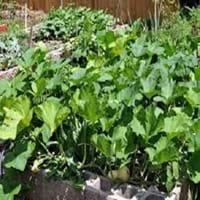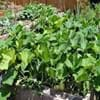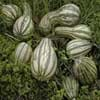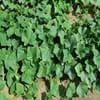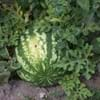Origin
North America, Mexico, Central America, South America
Hybrid origin, Southern Asia
Types
Neck, Really Big Hybrid, Waltham
Slicing, Pickling and burpless
Number of Varieties
Not Available
Habitat
Cultivated Beds
Floodplains, Wet forest
USDA Hardiness Zone
9-11
7-8
Sunset Zone
A1, A2, A3, H1, H2, 1a, 1b, 2a, 2b, 3a, 3b, 4, 5, 6, 7, 8, 9, 10, 11, 12, 13, 14, 15, 16, 17, 18, 19, 20, 21, 22, 23, 24
A3, H1, H2, 1a, 1b, 2a, 2b, 3a, 3b, 4, 5, 6, 7, 8, 9, 10, 11, 12, 13, 14, 15, 16, 17, 18, 19, 20, 21, 22, 23, 24
Habit
Prostrate/Trailing
Vining/Climbing
Flower Color
Yellow, Gold
Yellow, Gold
Flower Color Modifier
Bicolor
Bicolor
Fruit Color
Peach, Tan
Green
Leaf Color in Spring
Green, Dark Green
Light Green
Leaf Color in Summer
Green, Dark Green
Green, Dark Green
Leaf Color in Fall
Green, Dark Green, Yellow green
Green, Dark Green, Yellow green
Leaf Color in Winter
Not Available
Not Available
Leaf Shape
Heart-shaped
Heart-shaped
Plant Season
Summer, Fall
Summer, Fall
Sunlight
Full Sun
Full Sun, Partial Sun
Growth Rate
Very Fast
Very Fast
The pH of Soil
Neutral
Neutral
Soil Drainage
Well drained
Well drained
Bloom Time
Early Summer, Summer, Indeterminate
Early Summer, Summer, Late Summer, Early Fall, Indeterminate
Tolerances
Drought
Drought
Where to Plant?
Container, Ground, Pot
Container, Ground
How to Plant?
Seedlings
Seedlings, Stem Planting
Plant Maintenance
Medium
Medium
Watering Requirements
Average Water Needs
Keep ground moist, Requires a lot of watering, Requires regular watering, Requires watering in the growing season
In Summer
Lots of watering
Lots of watering
In Spring
Moderate
Moderate
In Winter
Average Water
Average Water
Soil Drainage Capacity
Well drained
Well drained
Sun Exposure
Full Sun
Full Sun, Partial Sun
Pruning
Remove damaged leaves, Remove dead branches, Remove dead leaves, Remove dead or diseased plant parts
Remove damaged leaves, Remove dead leaves, Remove shoots
Fertilizers
Apply 10-10-10 amount, Apply 12-12-12 amounts, Nitrogen, Phosphate, Potassium
All-Purpose Liquid Fertilizer, Compost, organic fertlizers
Pests and Diseases
Red blotch
Anthracnose, Bacteria wilt, Downy mildew, Fungal Diseases, fungus, Fusarium wilt, Leaf spot
Plant Tolerance
Drought
Cold climate
Flower Petal Number
Single
Single
Foliage Texture
Coarse
Coarse
Foliage Sheen
Matte
Matte
Attracts
Ants, Bees
Ants, Birds, Flying insects, Insects, Rats, Squirrels
Allergy
Dermatitis
Throat itching
Aesthetic Uses
Not Used For Aesthetic Purpose
Showy Purposes
Beauty Benefits
Glowing Skin, Good for skin and hair
Not Available
Environmental Uses
Air purification
Air purification, Food for animals, Food for birds, Food for insects
Medicinal Uses
Antiasthamatic, anti-cancer, anti-inflammatory, Cardiovascular problems, cholesterol-lowering, constipation, Diabetes, Fiber, High blood pressure, Immunity, Manganese, Rich in Potassium, Vitamin A, Vitamin C, Vitamin E
anti-cancer, Anti-oxidant, Antioxidants, Combats Stress, Improve heart health, Indigestion, Inflammation
Part of Plant Used
Flowers, Fruits, Leaves, Seeds
Fruits, Seeds
Other Uses
For making oil, Used As Food
Used As Food, Used as Ornamental plant, Used for its medicinal properties
Used As Indoor Plant
Yes
Yes
Used As Outdoor Plant
Yes
Yes
Garden Design
Edible, Herb / Vegetable, Vine
Edible, Herb / Vegetable, Vine
Botanical Name
CUCURBITA moschata 'Quantum'
CUCUMIS sativus 'Diva'
Common Name
Butternut Squash
Cucumber
In Hindi
Butternut Squash Plant
खीरा
In German
Butternut Squash-Anlage
Gurke
In French
Courge musquée Plante
concombre
In Spanish
Planta de la calabaza de Butternut
Pepino
In Greek
Κολοκύθια Φυτών
αγγούρι
In Portuguese
Butternut Squash planta
pepino
In Polish
Piżmowa roślin
ogórek
In Latin
Planta butternut cucurbitae
cucumeris
Phylum
Magnoliophyta
Tracheophyta
Class
Magnoliopsida
Magnoliopsida
Order
Violales
Cucurbitales
Family
Cucurbitaceae
Cucurbitaceae
Clade
Angiosperms, Eudicots, Rosids
Angiosperms, Eudicots, Rosids
Tribe
Not Available
Melothrieae
Subfamily
Papilionoideae
Cucurbitoideae
Number of Species
Not Available
Season and Care of Butternut Squash and Cucumber
Season and care of Butternut Squash and Cucumber is important to know. While considering everything about Butternut Squash and Cucumber Care, growing season is an essential factor. Butternut Squash season is Summer and Fall and Cucumber season is Summer and Fall. The type of soil for Butternut Squash is Loam and for Cucumber is Loam while the PH of soil for Butternut Squash is Neutral and for Cucumber is Neutral.
Butternut Squash and Cucumber Physical Information
Butternut Squash and Cucumber physical information is very important for comparison. Butternut Squash height is 7.62 cm and width 50.80 cm whereas Cucumber height is 15.20 cm and width 180.00 cm. The color specification of Butternut Squash and Cucumber are as follows:
Butternut Squash flower color: Yellow and Gold
Butternut Squash leaf color: Green, Dark Green
Cucumber flower color: Yellow and Gold
- Cucumber leaf color: Light Green
Care of Butternut Squash and Cucumber
Care of Butternut Squash and Cucumber include pruning, fertilizers, watering etc. Butternut Squash pruning is done Remove damaged leaves, Remove dead branches, Remove dead leaves and Remove dead or diseased plant parts and Cucumber pruning is done Remove damaged leaves, Remove dead leaves and Remove shoots. In summer Butternut Squash needs Lots of watering and in winter, it needs Average Water. Whereas, in summer Cucumber needs Lots of watering and in winter, it needs Average Water.
